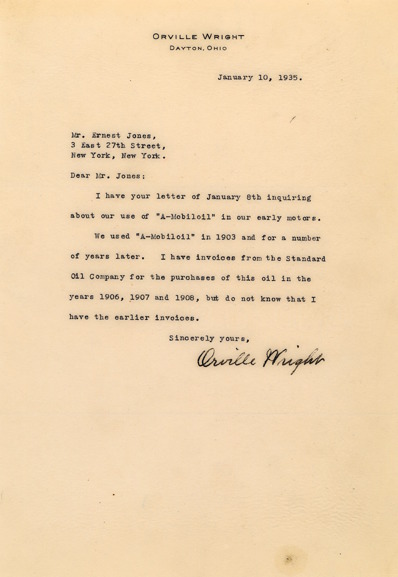
Copilot to history
How a 12-second, 120-ft flight changed the world
The flight lasted only 12 seconds, the plane traveling a little more than the length of a football field. Orville Wright held the rudder controls in a white-knuckled grip. Wilbur watched his brother soar by, 20 feet off the cold and windy North Carolina beach, wishing he could trade places. Instead, he had to trust that their innovative design would continue to defy gravity’s pull from the sandy ground beneath.
Orville was alone with a makeshift aircraft of bicycle parts, canvas and a small, light engine powered by Jersey Standard fuel, the forerunner to Exxon, and lubricated by Vacuum Oil, which had that same year been acquired by Mobil. The rudder was hard to control in 20-mph gusts but he managed it, setting the Wright Flyer down after 120 feet of powered flight. The date was December 17, 1903.
The brothers couldn’t imagine then how their invention would radically transform the world. Yet, in their lifetimes, they saw aviation technology grow to define modern transportation in the 20th century.
Nor could the companies that would one day become ExxonMobil know that they would continue to play an important role in aviation. Their products would help legends like Charles Lindbergh fly solo across the Atlantic, Amelia Earhardt traverse the Pacific and Wiley Post circle the globe alone.
But, it all began 113 years ago on a lonely spit of land in North Carolina. Check out the accompanying photos of that historic day.